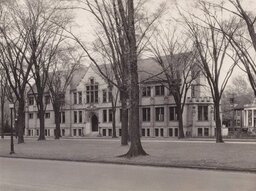In 1850, a group of Buffalo’s leading citizens gathered to discuss the educational opportunities for their daughters. Over 150 years later, Buffalo Seminary remains one of the nation’s outstanding academic institutions for young women.
From Johnson Park to Bidwell Parkway and Beyond: A Short History of Buffalo Seminary
The full content is available in the Fall 2014 Issue, or online with the purchase of:
If you have already purchased the product above, you can Sign In to access it.
Related Content








